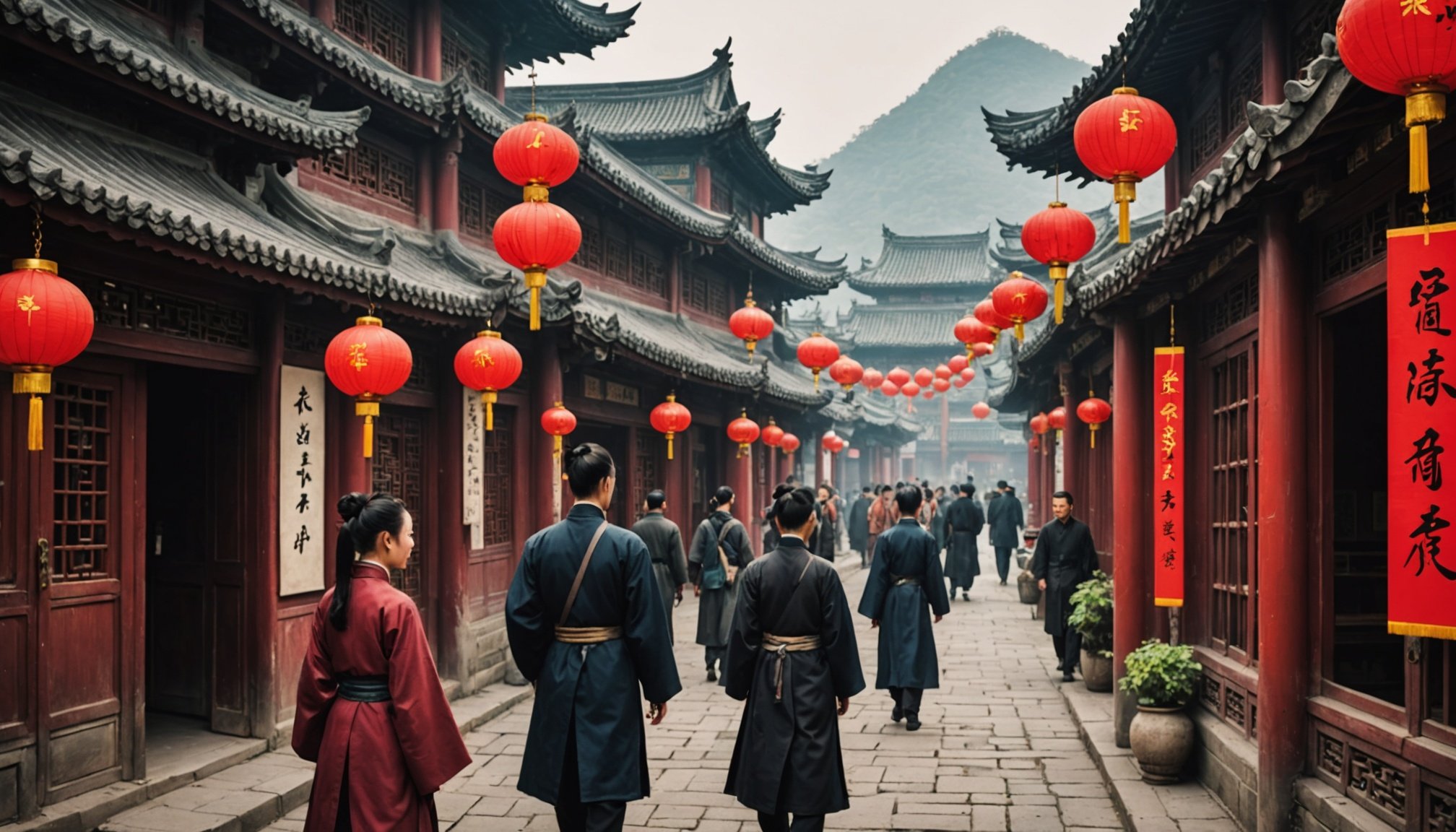Chinese novels offer a rich tapestry of storytelling that spans centuries, blending history, mythology, and social critique. From epic fantasies to intimate romances, these works reveal evolving literary styles and cultural values. Exploring key titles and genres uncovers the enduring influence and complexity behind China’s most celebrated narratives, inviting readers to appreciate their depth beyond popular trends and translations.
Overview of Chinese Novels and Their Cultural Significance
Https://yuanliterature.com/ is a platform that emphasizes the lasting influence of classic Chinese literature, particularly the renowned historical epics and modern Chinese fiction. Since the Ming and Qing dynasties, the Six Classic Chinese Novels have played a pivotal role in shaping Chinese cultural heritage. These works—like Journey to the West and Romance of the Three Kingdoms—have transitioned from oral storytelling and operas to modern media, including graphic novels, films, and video games.
Additional reading : What impact is the housing crisis having on UK families?
They serve as vital cultural symbols and have significantly influenced Chinese identity. These novels feature complex narratives, rich symbolism, and social commentary, which continue to resonate globally. Their themes—heroism, morality, social hierarchies—are timeless, inspiring adaptations across East Asia and beyond. Their broad dissemination in the late imperial period contributed to an international cultural exchange, enriching local literary traditions.
Understanding these works offers insight into the evolution of Chinese storytelling, stressing their importance in both literature and cultural history. You can view more details on this page: https://yuanliterature.com/.
Also to discover : Artisanal cutlery: handcrafted knives from ancient morta wood
Key Characteristics and Themes of the Classic Chinese Novels
Formal Features and Structural Elements
Classic Chinese literature is defined by complex narrative structures and pronounced thematic diversity. The renowned historical epics—like the “Four Masterworks”—demonstrate a preference for length and episodic organization, often exceeding 100 chapters. Symmetry in narrative blocks, combined with the strategic use of irony and satire, allows these serialized storytelling impact novels to deliver profound social commentary in narratives while maintaining reader interest. These works blend vernacular speech with classical forms, forming the linguistic backbone of classic novel collections and elevating them to the highest literary standards.
Major Themes and Cultural Messages
These classic novel collections explore enduring cultural heritage themes. “Romance of the Three Kingdoms” stages the tension between dynastic order and chaos using detailed narrative pacing techniques. “Water Margin” questions traditional heroism, introducing character-driven plots with moral lessons and teachings. “Journey to the West” infuses supernatural elements in fiction and humor and satire elements to critique spiritual quests. “Jin Ping Mei” stands out for its exploration of sexuality entwined with moral conservatism, defying censorship influences of its time.
Literary Techniques and World-Building
Symbolism and allegory paired with character archetypes in fiction build immersive, mythological fantasy worlds and historical period settings. Through scene-setting and world-building, each work crafts fictional geography and realms, while symbolism and allegory deepen meaning. The novels’ integration of social commentary in narratives, genre blending in novels, and subtle plot twists and suspense are essential to their enduring influence, inspiring adaptations to TV and film and ongoing literary analysis.
Historical and Cultural Impact of Chinese Novels
Dissemination and Cross-Cultural Exchange
Chinese novels have played a pivotal role in cross-cultural circulation throughout East and Southeast Asia. During the 17th and 18th centuries, import records reveal that hundreds of classic Chinese literature titles reached Japanese ports such as Nagasaki each year, sparking widespread literary evolution in the region. As a result, influential literary authors across Asia adapted narrative techniques, blending vernacular styles and local themes. Modern online reading platforms, as seen with Yuan Literature, serve this tradition today: serialized digital novels and fan-favorite romance sagas reach readers worldwide, reinforcing cultural influence and fostering international editions.
Editorial Changes and Reception
The Ming and Qing eras saw classic Chinese literature undergo profound editorial transformation. Scholars and editors added or abridged chapters and annotated editions, refining narrative pacing techniques for modern audiences. This era also introduced literary analysis and critiques, elevating fiction’s artistic status through references to celebrated poetry and painting. These commentaries laid the groundwork for literary evolution, further legitimizing the genre within intellectual circles and ensuring translation into bestsellers in translation for global readership.
Societal and Literary Role
Chinese novels shifted from “minor writings” to highly respected art forms, deeply entwined in drama, social commentary in narratives, and contemporary storytelling styles. Today, they remain accessible via serialized digital novels and mobile apps for reading, continuously evolving alongside digital literary trends. Their cultural influence shapes adaptations to TV and film, influences community fanfiction, and ensures their enduring presence in popular culture.
Reading Platforms and Contemporary Accessibility
Online reading platforms now provide wide-ranging access to classic Chinese literature and modern Chinese fiction. Readers find historical epics, wuxia adventure series, and fan-favorite romance sagas offered as serialized digital novels. Digital literary trends point to episodic content updates and robust reader reviews and ratings as key factors in keeping audiences engaged.
Translation projects, including official licensed translations and bestsellers in translation, play a central role in making both renowned historical epics and contemporary storytelling styles available for international audiences. Platforms such as Yuan Literature help bridge cross-cultural influences, offering translated literary works and supporting a diverse selection: from xianxia fantasy narratives and LGBTQ+ representation in the BL genre to new digital literary trends and experimental narrative voice and style.
Audiobooks, mobile apps for reading, and multimedia adaptations further expand how readers approach classic novel collections and serialized storytelling impact. Community discussion forums and creative outlets like fan art and literary analysis and critiques help foster engagement. Major publishing houses and indie author platforms both contribute, encouraging a blend of traditional versus modern themes and ensuring that historical period settings, modern urban settings, and even fictional geography and realms are more reachable than ever.
Exploring the Rich Tapestry of Chinese Novels
Classic Chinese literature stands as a pillar of storytelling, marked by renowned historical epics and wide thematic diversity. Using the Stanford Question Answering Dataset (SQuAD) approach, direct answers include:
- The most best Chinese novels frequently referenced as canonical are the six classic novels.
- These works defined and influenced modern Chinese fiction and shaped contemporary storytelling styles.
- Translated literary works and international editions continue to expand their reach, introducing cultural heritage themes to new audiences.
Moving deeper, these stories are cherished for their major story arcs, scene-setting, and world-building rooted in historical period settings or mythological fantasy worlds. Legendary titles like “Romance of the Three Kingdoms” and “Journey to the West” typify the serialized digital novels tradition, blending character-driven plots with supernatural elements in fiction. The wuxia adventure series and xianxia fantasy narratives popularized epic saga structures and moral lessons, ensuring a place for episodic content updates and serialized storytelling impact in digital literary trends.
Online reading platforms and mobile apps for reading, such as Yuan Literature, enable wider access to both bestsellers in translation and fan-favorite romance sagas, catering to readers through free versus paid content models and supporting a robust ecosystem of community discussion forums and reader reviews and ratings.








